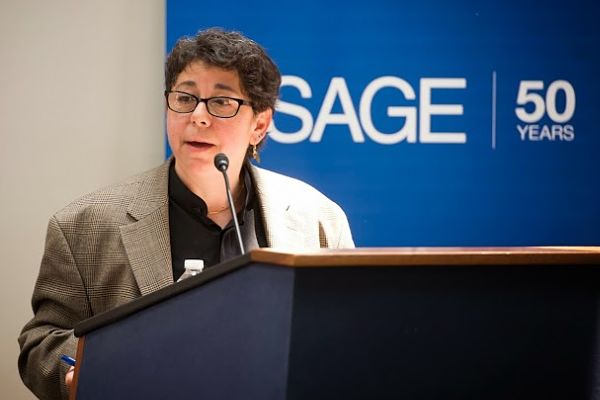Stories of Research to Reality: Kerric Harvey
In early May SAGE gathered seven social scientists on Capitol Hill to tell stories, stories of their disciplines’ impact on society and the economy, and stories of their own academic journey. The underlying goal of “Stories of Research to Reality: How the Social Sciences Change the World” was both to mark SAGE’s 50th birthday as an independent publisher and to demonstrate the value and impact of social science itself, increasingly under attack as either a waste or a luxury by some legislators.
The entire event, moderated by prominent blogger and George Washington University political scientist John Sides and held at the Hart Senate Office Building, was recorded; the seven individual videos are published here. Each tale presents one facet of the real-world value of actual social and behavioral science research, with the implicit message that this is scholarship we should be encouraging.
The final speaker in this series is Kerric Harvey, associate professor of media and public affairs, and associate director of the Center for Innovative Media at George Washington University. Her terrain is the Internet, and she hammered home how integral good social science, whether formal or informal, is in learning to live with something that increasingly redefines what it means to be human. She reviewed the arc of her specific research into the intersection of social media and society, and “the increasingly short leash between those two things.”
Harvey’s talk spotlighted three specific incidents in her career as a media anthropologist, starting with a 1995 invitation by the National Science Foundation (NSF) to participate in an anthropological task force brought together to create an agenda for the Internet for the 20th and 21st centuries (this was the same year that Internet backbone known as NSFNET powered down and commercial operators stepped in).
As Harvey related, the NSF brought together about 30 people — academics, inventors, policy people, entrepreneurs – with only about a third of them social scientists. After locking this disparate team in a hotel basement in Washington, she joked, “for three days they shoved coffee and donuts under the door and they hoped for the best.” What emerged, beyond a government report, was a sense “that this Internet thing was going to be even bigger than we’d bargained for …. What we walked out with was a list of questions that had to do with how people live and how people interrelate, both with each other and with this burgeoning technology.”
Looking back two decades later, Harvey said, she’s surprised that “we got a lot right,” with about 90 percent of what they’d identified as important topics for the future were still seen that way today – a better batting average than “hyper caffeinated academics on a three-day sugar rush could have predicted …”
The group predicted the Internet that increasingly human relationships would be subordinate to or at least dependent on the internet, that human endeavors from war to shopping would never be the same, that basic the nature of work would change by cutting moorings to time and place, and that privacy “was just going to evaporate.
“We know more now that we did then then, but we don’t know everything we need to now, not by a longshot,” Harvey added. Ultimately, she concludes, wicked challenges such as, but hardly limited to, domesticating the Internet “require collaboration from the full range of human expertise to help navigate an alluring but really complicated future.”
Her research and policy development work during the formative stages of the Internet era continued at the Smithsonian Institution’s Curriculum Initiative Program National Advisory Board, which evaluated national curriculum support tools in new computer technology. She also researches the media arts and cultural archetype in the public imagination, the anthropological effects of new media technologies, digital storytelling, and the relationship between new media narratives and political identity. Her flagship project to date has been serving as the general editor for the award-winning Encyclopedia of Social Media and Politics.
The other speakers in this series were:
Deborah Rupp | William C. Byham Chair in Industrial/Organizational Psychology, Department of Psychological Sciences, Purdue University. To see her talk, click HERE.
Bruce Bueno de Mesquita | Julius Silver Professor of Politics, New York University. To see his talk, click HERE.
John W. Creswell | professor of educational psychology, University of Nebraska-Lincoln. To see his talk, click HERE.
Claire M. Renzetti | professor of sociology, University of Kentucky. To see her talk, click HERE.
Michael Reisch | Daniel Thursz Distinguished Professor of Social Justice, University of Maryland. To see his talk, click HERE.
Jim Knight | research associate, University of Kansas Center for Research on Learning, and director of the Kansas Coaching Project. To see his talk, click HERE.
SAGE is the parent of Social Science Space.




















































































